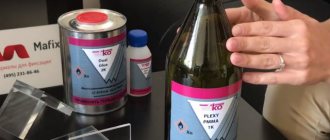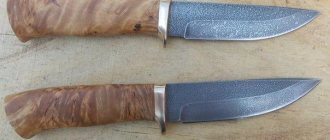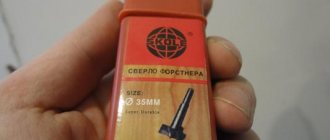Determining the type of plastic
The type of plastic is indicated on each product with a special symbol. In the process of creating the code mark, the developers decided to apply it so that it would not be visible, so to see the corresponding symbols, you will have to carefully inspect the product.
Plastic can contain a large number of different substances, including very dangerous ones. If you learn to determine the composition of a material by labeling, then in the future you will protect yourself from purchasing harmful material and using it to store food.
What does the marking on plastic mean?
The marking is determined by seven numbers, each of which will indicate to you the composition and purpose:
1 - The composition under this number is called polyethylene terephthalate (PET). Various containers and cling film are made from this material.
2 - This is pure polyethylene (HDPE), from which bags and similar low-density containers are made.
3 - The substance is polyvinyl chloride (PVC), which is used to make window frames. It is prohibited to be used as a food product, but it is polyvinyl chloride that is made in the form of caps for plastic bottles.
4 - High-density polyethylene (LDPE) is used to create children's toys, greenhouse film and plastic pipes.
5 - Propylene (PP) is most common in everyday life. Syringes, hot water pipes and dishes are made from it, as this material has good resistance to high temperatures.
6 - The number indicates a material called polystyrene (PS). It is used to make containers for yogurt and the lining of chambers of modern refrigerators.
7 - This group includes other materials that are not included in any of the above markings. This is foil or some kind of polymer used as a container for milk or juice.
By remembering these markings, you will learn to determine the composition of the plastic and the relevance of its use. All elements differ in density, flexibility, resistance to cold or heat, respectively, and gluing to each other or other elements.
General information
Determining the type of plastic
To glue plastic tightly, you first need to find out what kind of plastic the item is made of. Knowing the type of plastic, you can choose the most suitable adhesive for it.
All manufacturers are required to put a recycling symbol on their products - this is a triangle with arrows on the sides, which symbolizes the reuse of materials.
REFERENCE! The triangle contains numbers from 1 to 7, which are often supplemented by an abbreviation. According to this designation, the type of plastic is determined.
Marking symbols on plastic
PET is a polyethylene material that is commonly used for food packaging.
It is used to make bags, film or transparent containers for bulk and liquid goods. HDPE is a densified polyethylene that is used to produce shrink film and packaging bags.
V (PVC) is a non-food plastic used for the production of durable and strong items, such as metal-plastic window frames, household buckets, and linoleum.
LDPE is a polyethylene that is used in the production of bottles for dairy products and other drinks, as well as toys, packaging bags, and cold water pipes.
PP is polypropylene, a chemically inactive heat-resistant plastic used in heat-resistant cookware, medical products, household utensils, toys, hot water pipes and fittings, and much more.
PS is a food-grade plastic used to make household utensils, disposable tableware, and kitchen appliance housings. When it is foamed, foam is formed, which is used in everyday life and in construction work.
O - these are other materials that are not intended for recycling, for example, those containing paper, metal or other substances. This also includes plastics that do not fit into any of the six groups.
To glue plastic reliably, you need to carefully consider the markings on this product and choose an adhesive that is intended for this group of polymers. There is another option to determine the type of plastic; to do this, you need to set fire to a small piece of it.
REFERENCE! Each type of plastic burns with a characteristic flame pattern and smell. But you need to have considerable experience to determine the type of plastic in this way.
Glue marking
There are also markings on tubes of glue; it’s just a pity that the marking system does not always coincide with the markings on the plastic product. If you are not an expert in the field of organic chemistry, then studying the labels will not get you anywhere. It is better to study the user manual, which must indicate which plastics can be glued with this type of glue.
Types of glue
As diverse as the plastics used in everyday life are, there is a wide variety of compositions produced and methods of their use.
What glue to glue plastic with: types of glue
Before you start gluing plastic elements at home, it is recommended that you familiarize yourself with the types of suitable glue. This will help you choose the correct classification and properly glue the elements together.
Liquid
It is considered the least effective means for gluing plastic. Used to connect surfaces that are not subject to regular loads. For complete gluing, the parts must be left for at least 20 hours. The advantage of this type of glue is that it does not deform the plastic.
Contact
The glue comes complete with a hardener, which is mixed in the prescribed proportions. Contact type is considered one of the strongest adhesives, but it is toxic. Before use, it is recommended to wear protective gloves, a mask or a respirator.
Reactionary
The most suitable adhesive for gluing plastic. It consists of epoxy filler, polyurethane, various solvents and resins. Depending on the composition and purpose, the adhesive is used in cold and hot areas, as well as in water. Due to a unique combination of substances, it firmly holds plastic together even with regular mechanical stress.
Hot melt adhesive
The glue spreads in a solid state, in the form of a rod. It is loaded into a special pistol and begins its action when heated. The substance does not provide good adhesion, so it is used only when connecting small parts.
Recommendations for preparing and storing glue
To ensure that the glue retains its properties for as long as possible, follow our recommendations:
- Always store formulations in tightly sealed containers. If the container does not close tightly, use one layer of aluminum foil and two layers of polyethylene as a lid gasket.
- If you use the solution from a jar, do not pour it over the edge, as it will get onto the neck and the lid will stick tightly. For convenience, take a brush.
- Always label formulations and keep them away from children and heat sources.
- If the recipe contains solvents or gasoline, use a respirator and gloves.
- Do not use containers in which glue was prepared for storing food products.
- Before you start creating the glue, prepare and measure all the necessary materials in advance.
- Do not dilute the compositions with water; use drying oil or solvents for this.
We recommend watching the video instructions:
Popular brands of glue for plastics
Let's highlight the best manufacturers of glue for gluing plastic parts:
- "Star". Budget adhesive designed for gluing plastic parts. Drying time is a day. Among the minuses, we highlight the lack of additional tools and the inconvenient shape of the container.
- "Second". Glue comes in liquid and gel form. Transparent color allows you to glue parts without stains or marks. Complete drying time – 2 hours. It also glues glass and wood well. It is stored mainly in tubes.
- Tamiya. The substance is intended for gluing small plastic parts. A brush is included. The advantage of the glue is its aromatization. As you work, you will smell lemon.
Each manufacturer produces glue with unique characteristics and capabilities, so you can choose the most suitable one for the connection.
The best superglues
You can use superglue to repair a broken part or glue a miniature plastic model together. It sets quickly and holds firmly.
Permatex super glue
Provides maximum connection strength. Made in the USA. For a 2-gram tube you will have to pay 126 rubles. Has a gel-like consistency. The adhesive joint can withstand loads up to 245N. The composition glues thin parts, hard-to-reach and vertical surfaces well. A strong connection is possible with non-porous plastic.
Can be used on plastic, plastic, metal, rubber and ceramic parts.
The composition is economical, one drop is enough to lubricate a surface measuring 6 cm2. Forms a transparent connecting seam.
Economy express universal
Cheap Chinese superglue, has a reliable cap that prevents air from getting inside the tube. Easy to use, sets quickly, costs 33 rubles. for 3 g. Suitable for plastic, plastic, metal, paper, rubber, porcelain parts. Creates a strong connection that can withstand loads up to 210 N.
After applying the glue to the cleaned, degreased surface, the parts are pressed against each other for up to 1 minute.
It has a pungent odor, so you need to work in a well-ventilated area.
Superglue Strength
Superglue made in China. For a 3-gram tube you have to pay no more than 50 rubles. It is easy to glue porcelain, plastic, glass, plastic, leather and wood parts together. A tube with a long spout allows you to apply the mixture pointwise, which saves its consumption. It does not spread and does not stain your hands. The main component is ethyl cyanoacrylate with the addition of a thickener. After drying, it forms a colorless seam, therefore suitable for gluing white and colored parts. Connection strength – 175 N.
It does not have a strong odor and sets in a few seconds. The main disadvantage is the large number of fakes on the market.
Henkel Super Moment Maxi
Good glue for joining polymers. Connect metal, cardboard, ceramic, porcelain bases. Sold in a soft tube with an elongated spout for targeted application without contaminating your hands. The cap securely closes the spout, preventing air from getting inside.
Henkel is a German brand, but this superglue is produced in Russia, which is why its quality is not always stable.
A tube weighing 20 g costs on average 290 rubles.
How to glue plastic
When gluing plastic parts together, you need to adhere to a certain sequence, otherwise you may end up with uneven parts, and you will have to go through a lengthy process of separation and cleaning to reconnect them.
Sequence of work
Immediately clean the area to be glued with a soap or alcohol solution. Then we increase the absorbency using sandpaper. Apply glue so that there is no excess, otherwise smudges will appear. When gluing, the parts must lie flat and tight to each other; after applying the substance, you need to restrain them for a certain time, depending on the brand of glue.
How to glue plastic using superglue and soda
When liquid glue and baking soda are combined, a chemical reaction occurs that speeds up the drying process and enhances bonding by increasing the temperature. To glue plastic using this method, you need to act consistently. After cleaning and sanding, cover the joint area with a small layer of baking soda, then pour the glue onto the soda, connect and wait for 1.5-2 hours to dry. For the best effect, treat the glued part of the plastic with micro-grained sandpaper.
How to glue plastic with dichloroethane
Dichloroethane is a very caustic substance, so when working with it you need to be completely protected from direct contact. When applied to plastic, the second one begins to dissolve, so you need to work with dichloroethane carefully, observing the correct proportions.
To glue plastic parts, apply a thin layer of a toxic substance using a brush and wait 10–15 minutes. and repeat the procedure. This method is considered the most effective, since the dissolved parts of the plastic merge into one whole. The disadvantages of such gluing include the possibility of deformation.
There is an alternative method of using dichloroethane. Pour the toxin into a metal or glass container and add pieces of similar plastic that will stick together. When a homogeneous thick mass is achieved, apply it to the joint. This will allow you to hide the seam.
How to glue products with a decorative outer surface?
If you apply glue to a decorative surface, traces of it will be visible. In this regard, the option of gluing parts in the internal part remains. To do this you will need fiberglass or any durable material. We clean the inner area to be glued, thoroughly saturate the fabric with glue and apply it tightly to both parts.
If the inside cannot be glued, then all that remains is to use rubber or gel glue. These substances take longer to dry, so you have the opportunity to eliminate excess during the bonding process.
How to glue a crack in plastic
Gluing a certain type of plastic requires glue of the appropriate marking. In the future, everything will depend on the connection location and the functions of the parts. For water containers we use a waterproof substance; in other cases it is better to use gel or liquid glue.
To glue the crack, it is important to use a strong fabric. After treating the joint area, saturate a rag with glue and carefully press it on both parts. If this method is not suitable, then we create multi-layer gluing. A gel-like substance is suitable for this, since it takes a long time to dry. Apply a thin layer of glue to the crack and wait until it dries, then repeat the procedure 2-3 times. For better effect, you can use baking soda.
How to glue plastic glasses frames
We clean the contact points with acetone or alcohol and apply a thin layer of glue to the broken points. For convenience, you can use a wooden ruler to fasten between the ears of the glasses. This will allow you to connect the parts as smoothly as possible. For small jobs, liquid glue is suitable.
How to glue plastic headphones
For plastic parts that are subject to constant mechanical stress, epoxy adhesive is suitable. If the headband of the headphones breaks, glue the required area several times. You can also install a bracket to connect the parts, which is also glued.
How to glue radiator plastic
The car radiator consists of hydrophobic plastic, which is difficult to glue. To connect the radiator parts you need to use a special glue, but even this will not hold the plastic tightly together. When the car is driven, all parts vibrate, so gluing the radiator is more of a temporary measure.
How to glue a plastic denture
If a crack appears on the prosthesis, the best option is to go to the clinic. The doctor will glue it together using a special medical glue that best matches the type of plastic. However, you can do this yourself using one of the common types of glue. Only dichloroethane is suitable for the prosthesis; other options will cause an allergic reaction or will not last long due to their constant presence in the mucous membrane.
Self-gluing the parts of the prosthesis will only give a temporary effect, and only a medical technician with the appropriate equipment can eliminate defects and the visible part of the connection.
How to glue plastic with cosmofen
Cosmofen is a famous brand of glue that is used in almost every industry. The best bonding occurs when paired with plastic, but cosmofen firmly bonds rubber and wood. The substance is not toxic, but contact with food should be avoided.
The gluing process is standard: we clean the joints from dirt and burrs, then apply acetone or alcohol, and only then apply the glue itself. Cosmofen sets in 1-2 minutes, but complete drying will occur within 24 hours.
How to glue plastic on a scooter
Workshops typically use special tools and welding. Not everyone has the appropriate equipment at home, so consider the method of gluing with glue or cold welding.
We clamp the plastic into a cleat, take coarse sandpaper and carefully rub the inside of the damaged plastic. This will allow the glue to absorb better and hold the parts more firmly. Then we apply the substance to the gluing area and saturate a thick piece of fabric with it. We connect the plastic at the chip site and let it dry for 3-5 minutes. We impregnate the fabric with glue or cold welding and apply it so that it covers the entire damaged area. Let it dry again and reapply glue.
How to glue greasy plastic
This type of plastic does not adhere well, so the substance should be selected for maximum adhesion properties. You can glue fatty plastics with cyacrine, rubber or gel glue. These substances are the most suitable, but they still contribute to temporary fastening. For an acceptable result, it is recommended to use welding and woven gaskets. This applies only to the damaged part that is not subject to mechanical stress.
How to glue plastic with acetone
Only ABS grade acetone will dissolve plastic, so make sure it is labeled before proceeding. The essence of such a connection is to create an adhesive mass using a solvent. Throw small pieces of plastic into a container with acetone and wait about 30 minutes. until it dissolves. A thick mass will be created, which we use as glue. The solvent takes a long time to erode, so it is recommended to fix the damaged part in cleats. After the acetone has completely dried, the parts will be firmly connected, creating a homogeneous mass.
How to glue plastic on a mirror
Before the procedure, you need to examine the part and find out the plastic markings. The decor is glued from the inside. We take fiberglass and impregnate it with epoxy resin. The size of the rag should be twice the size of the area to be glued. Superglue or a similar liquid substance is not as effective, since regular vibration will cause the crack to delaminate.
How to glue plastic with a soldering iron
Before the procedure, you need to cut pieces of plastic according to the shape of the crack. The plastic markings must match. We clean the damaged area from dirt and grease and apply the cut plastic to the chip site. We heat the blowtorch and slowly run it along the crack until the molten plastic fills the space between the parts being joined. While the substance has not dried, it needs to be cleaned; this can be done with any flat, durable object. We repeat the procedure several times, after which we let it dry completely.
How to glue plastic from bottles
When gluing plastic bottles, Moment glue is the best. Other substances show weak attachment, or even completely corrode the plastic. More often than not, bottles are distributed with a smooth sliding surface, so before gluing, you need to sand the plastic area with sandpaper. Another advantage of Moment is that it is transparent, which means it will practically not be visible on plastic.
The best waterproof adhesives
Plastic can withstand prolonged exposure to moisture well. For a waterproof connection when organizing an assembly unit from plastic parts, it is necessary to use special adhesives.
Moment plastic
The best mixture from the group of contact agents. Produced in Russia. The cost of a tube weighing 30 g is 59 rubles. Plastic and polyethylene are held together well. Dries quickly and retains its strength characteristics even when exposed to moisture.
The result is a transparent seam that is not afraid of temperature fluctuations, acids, alkalis, salts, and other aggressive chemical reagents of inorganic origin. The sealant contains toxic components, so it should not come into contact with skin or food.
3m scotch weld pr100
Epoxy composition has good adhesion to plastic. Complete hardening in 20 minutes. The cracks are well sealed and the broken parts are attached. Suitable for various types of plastics.
Loctite 406
This is a German brand, and the glue itself is produced in Ireland. It firmly connects smooth and rough surfaces. Packaged in jars of 20 g. Package price ~635 rub.
The adhesive-sealant has a high polymerization rate, low viscosity and resistance to temperature fluctuations from -40 to +80 °C. When fixing plastics, elastomers, metals or rubber, there is no gap. The disadvantage is the high price, strong toxic odor, and not all plastics are suitable for gluing.
Cosmofen Plus S
The most popular composition for installing plumbing systems. It is made in Germany and costs 244 rubles. for 0.2 kg. It is white in color and is often called liquid plastic. Waterproof, resistant to alcohol and petroleum products. Used for gluing polypropylene pipes, plastic gutters, when installing pipelines, installing advertising space, plastic windows and doors. The formed seam withstands precipitation, sunlight, and temperature changes. Dries quickly and forms a flexible seam. The only drawback is the strong toxic smell.
88 Luxe
The product is produced in Russia. It is produced in metal cans of 0.9 kg, so it is purchased for large-volume work. The cost of the can is 370 rubles. The mixture combines plastic, plastic, rubber, and is used in the shoe industry for gluing polymers. Forms a durable, water-resistant seam. The main disadvantage is the pungent odor and long drying time.
How to achieve maximum effect when gluing
In order for the plastic to adhere well, you need to carry out the procedure sequentially:
- we determine the markings of the plastic and select the appropriate glue;
- clean the surface of the plastic with acetone or alcohol;
- when gluing from the inside, clean the surface with sandpaper;
- After fastening, wait as long as required according to the instructions.
If you are unable to determine the type of plastic, then drop some glue onto the desired surface and watch the reaction. If the plastic has not dissolved and the glue is firmly attached, then the substance matches the material.
Method 1: Repair using a hair dryer and a wand
We remove the hair dryer from the station. We set the temperature required for soldering ABS plastic to 300 °C. As the work progresses, the temperature should be adjusted if the plastic melts too much or, conversely, not enough.
We heat the rod with a hairdryer so that it becomes soft and almost begins to melt, and we do the same with the damaged area on the part. The mating part must be well heated, otherwise the adhesion will be poor and the resulting connection will be fragile. If the plastic of the part being repaired swells, it means the process is going correctly.
How to glue plastic without glue
There are several ways to glue plastic without using glue:
- Dichloroethane. The toxic substance can dissolve plastic. When mixed correctly, you will get a thick solution, which is subsequently used as a binder.
- Soldering iron or heating pad. This method requires an experienced approach, so it will be difficult to fix the plastic with a soldering iron yourself. Using a blowtorch, we directly melt the seams of plastic or use material of the same marking as a connector.
- Acetone. Degrease the surface of the plastic and use a brush to moisten the crack or chip. Then we firmly connect the material together and also apply acetone. A slight dissolution of the plastic will create a soldering effect and firmly hold the part together.
Is it possible to cold weld plastic together?
Cold welding can be two-component or one-component. In the first case, you mix two substances and get an adhesive. One-component welding is sold ready-made, so you only need to knead it a little and apply it to the damaged surface.
When welding plastic items, the main thing is to select the appropriate markings, otherwise the plastic elements will not receive good bonding. Each type of cold weld can withstand a certain temperature, so check the characteristics of the substance on the packaging before purchasing.
The gluing procedure is similar to standard glue: clean the surface and apply the substance in thin layers. If the weld hardens during the process of joining the plastic, this can be corrected with a hairdryer. Once warmed up, the cold weld will become elastic and you can reshape or remove it.
How to glue plastic with epoxy resin and fiberglass (epoxy glue)
Epoxy resin hardens quickly, so we prepare all components in advance before the procedure. We apply the epoxy substance to the joint in several layers. Leave for a few minutes and apply tightly to the joint. We completely saturate the fabric and press it to the joint. For better effect, perform the procedure 2-3 times. Let the surface dry for a day.
Bitumen tape
I advise you to seal small cracks and shallow damage with bitumen-polymer tape. The single-sided consumable material consists of reinforced polyethylene film and a thin layer of aluminum. Elastic raw materials perfectly follow the shape of the tank, and the astringent coating ensures strong adhesion to the plastic.
Source nasha-stroyka.com.ua
I use a patch made of bitumen-polymer tape to eliminate leaks in PVC containers. I degrease the surface of the tank and wipe it with a dry cloth. The patch should protrude 2-3 cm above the damage. Using scissors, I cut out the required size, remove the protective film and, with a gentle movement, seal the crack from the outside.
How to glue plastic with hot glue (hot glue gun)
Hot-melt adhesive is distributed in a solid state in the form of a rod. The adhesive effect appears after increasing the temperature. To ensure a high-quality connection of plastic, it is recommended to use a special gun. The tool comes in different capacities and differs in the process of application, so you should choose the most appropriate one. Due to its weak strength, glue is used more often in modeling, when gluing small fixed parts.
When you press the trigger, the substance heats up and it becomes ready for gluing. This type of connection is intended for modeling or connecting decorative elements that are not subject to frequent mechanical stress. The advantages include convenience and ease of use.
Before connecting, we charge the gun with a rod and clean the area of grease and debris, thereby warming the surface so that the substance does not harden prematurely when applied. Then we pull the trigger of the gun and begin to move it along the area to be glued until the desired layer of hot-melt adhesive is applied.
How to glue plastic to rubber?
Here everything will depend on the further use of the plastic item. If it is not subject to regular stress, then rubber cement will do. When using the substance for its intended purpose, follow the instructions. Among the disadvantages, we note long drying time and low resistance to water.
Moment glue and its analogues are also suitable. We apply the liquid gel-like substance tightly to the parts that have been previously cleaned of dirt and dust. It is better to place a heavy object on the joint and leave it to dry for 24 hours.
You can glue plastic surfaces from any materials, and regardless of whether they are subject to stress or not, you can always choose the most effective substance. The main thing in the gluing process is marking. If you know the type of plastic, you can select the appropriate glue and tightly fasten the elements.
Hot glue, fast but unreliable
A quick fix might be hot. It is easy to use, but is not durable and can be used for temporary bonding. When using, be careful when applying to PLA, it may deform the plastic.
Surface preparation: sand, clean and degrease the surfaces to be bonded.
Suitable for PLA, ABS, TPU, not suitable for PETG and nylon.
A great option for gluing large models is to use a 3D pen. In this case, the thread for the handle can be selected from the same material as the printed 3D model.










